Electric Truck Statistics By Technology, Regions, Sales And Facts (2025)
Updated · Nov 03, 2025
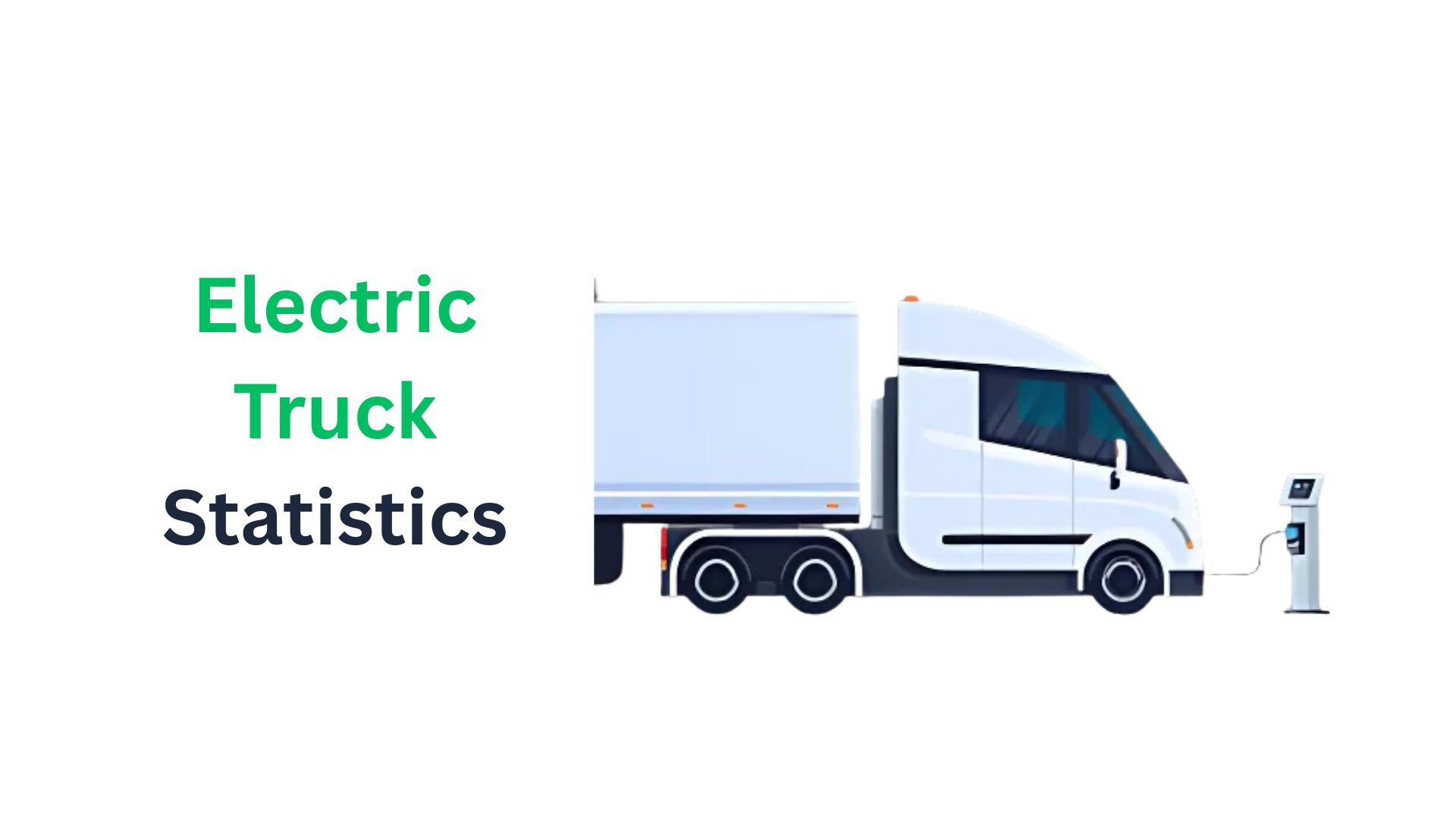
Table of Contents
Introduction
Electric Truck Statistics: The electric truck sector is now undergoing a historic metamorphosis that would set the trajectory for global transport in the future. With sales exceeding the 90,000-unit mark in 2024 and China capturing more than 80% of those sales, battery electric trucks, or BEVs, are no longer niche: they are mainstream contenders. Electric truck production is thus becoming one of the greatest environmental necessities and economic opportunities available to industries globally, largely driven by increasing regulations against emissions, with the declining cost of batteries and huge efficiency gains furthering this conversion. This article will show the recent electric truck statistics.
Editor’s Choice
- As per the forecast, BE trucks shall make up 17% of global truck registrations by the year 2025 and 43% by 2030, up from only 1% in 2021.
- By 2030, 20% of all trucks and buses worldwide will be battery electric, with 90% of all transport electrified by 2040.
- By 2030, 600,000 BE trucks shall be produced in North America, Europe, and Greater China, scaling up to 2.7 million by 2040.
- EU mandate forces truck OEMs to reduce emissions by 45% by 2030 and 90% by 2040, hence driving the adoption of electrification.
- Electric trucks reduce 20 times more CO₂ per vehicle than electric cars.
- Truck ranges are being extended further by technological developments from 600 to 900 km, with charging speeds speeding up to 1,200 kW (+200%) while drivetrain costs fall by 10%.
- Global battery demand for electric trucks will have reached 400 GWh by 2030 and 1,700 GWh by 2040, relying more on LFP batteries.
- In 2024, more than 90,000 electric medium- and heavy-duty trucks were delivered worldwide, up 80% from the year prior, with China accounting for 80% of sales.
- Europe sold over 10,000 electric trucks for the second consecutive year; the U.S. sold 1,700-plus electric trucks, which is greater than what was sold from 2015 to 2022 combined.
- Canada had 2,000 sales, Brazil 500, and Japan, South Africa, and Thailand shot up in sales from 130 to nearly 900.
- China already sees BEV trucks cheaper to own than diesel, with electricity costing 65% less per kilometre than diesel and overall energy costs 50% lower.
- Diesel trucks are still 20% cheaper than BEVs in the US, with parity expected to happen around 2030; meanwhile, in Europe and China, equalising will come much sooner.
- BEVs are 55% more energy-efficient than diesel, whereas FCEVs are only 30% efficient.
Global Electric Trucks
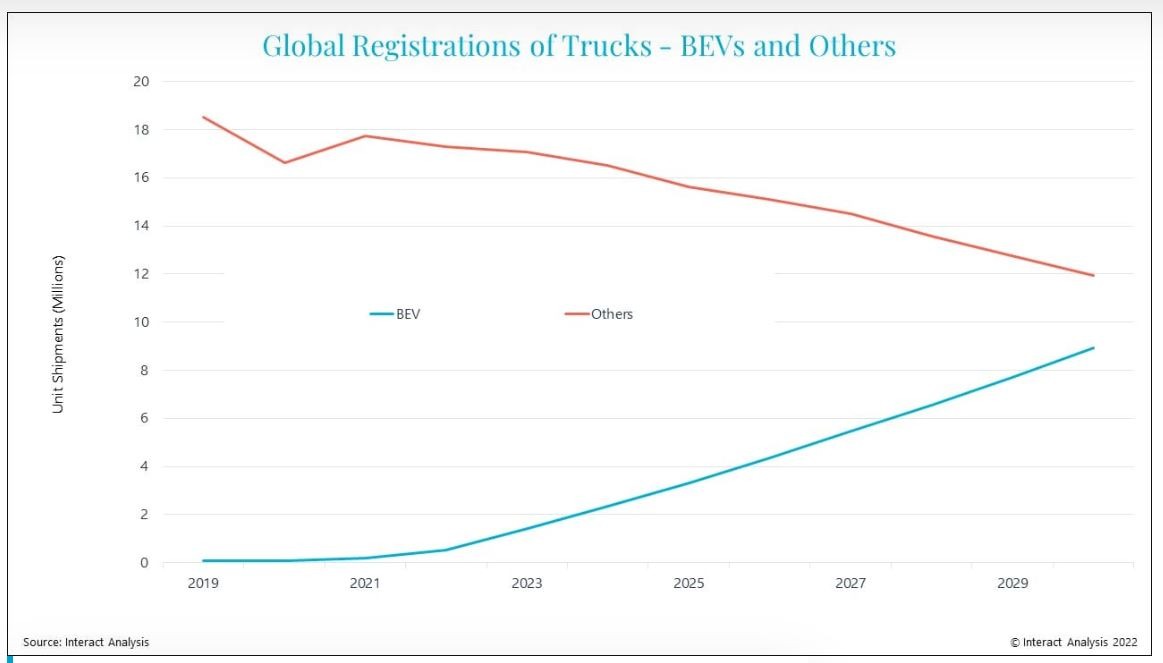
(Source: interactanalysis.com)
- As per Interactive Analysis, electric truck statistics show that battery electric trucks will therefore be expected to grow fairly fast in the coming years.
- Their worldwide truck registrations are expected to be 17% by 2025 and 43% by 2030, an increase from a mere 1% in 2021.
- Growth between 2022 and 2023 has been driven by utility and light-duty trucks, chiefly van sales in the UK and pickup trucks in the US.
- Meanwhile, in China, sub-1-ton electric trucks are really holding up well, also ensuring synergies with the global BEV complacency.
Electric Trucks Statistics By Regions
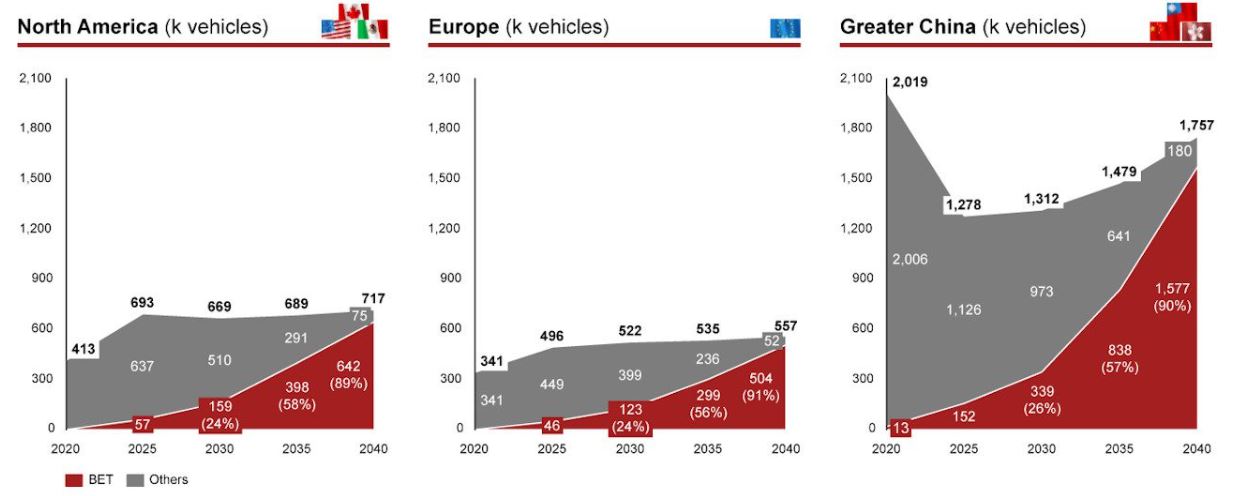
(Source: thedriven.io)
- As per Driven, electric truck statistics show that Electrification is picking up speed in the transport industry globally, making battery electric trucks and buses 20% of all vehicles by 2030.
- Strategy&, the strategy consulting arm of PwC, points out that this shift stands central to the next phase of the eMobility revolution.
- One in every five trucks and buses worldwide will be battery electric by the end of the decade; also, transport electrification is slated to stand at 90% by 2040.
- North America, Europe, and Greater China are expected to produce some 600,000 battery electric trucks by 2030, and thereafter, ramp this figure up to 2.7 million by 2040.
Accelerating Truck Electrification Through Regulation And Technology
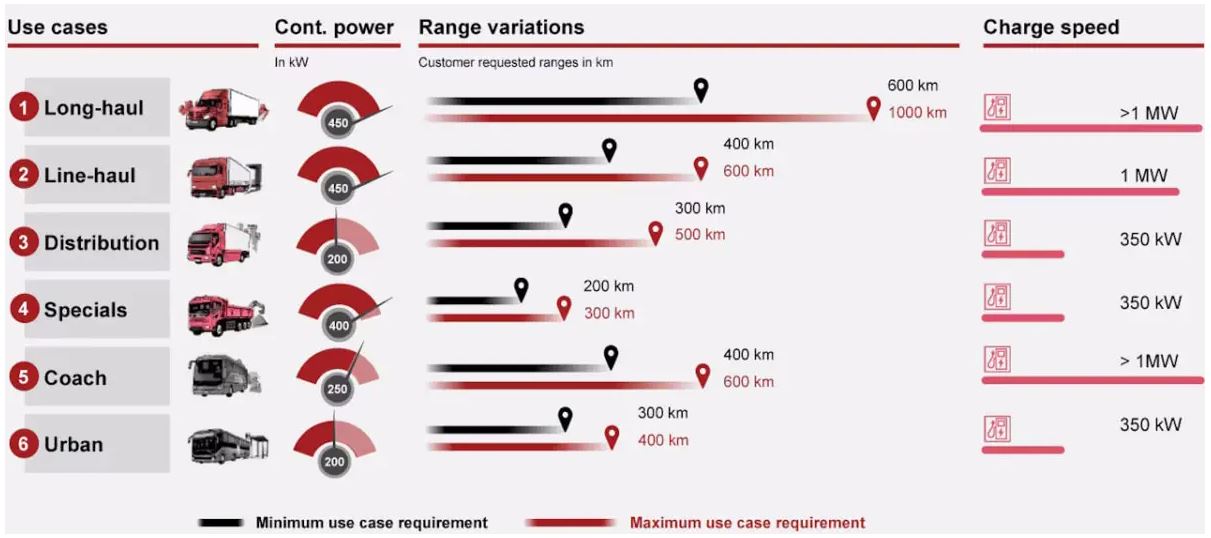
(Source: thedriven.io)
- In order to propel the electrification of transport, regulatory mandates such as the EU placing a requirement on truck manufacturers to reduce new fleet emissions by 45% by 2030 and by 90% by 2040 will be in place.
- Similar policies are under consideration in the United States and China, with greater stringency from 2030.
- Electrified trucks make an enormous environmental impact by abating more than 20 times the amount of CO2 per vehicle than electric cars.
- Battery and electric truck developments enhance truck range from about 600 to 900 km, increase charging rate speed by 200% to 1,200 kW, and reduce drive train costs by roughly 10%.
- This allows BATs to venture into long-haul and logistics applications despite their higher upfront investment by reducing their total cost of ownership.
- Expanding the application of BETs across additional transport scenarios will aid in the reduction of emissions and catalyse sustained technological innovation.
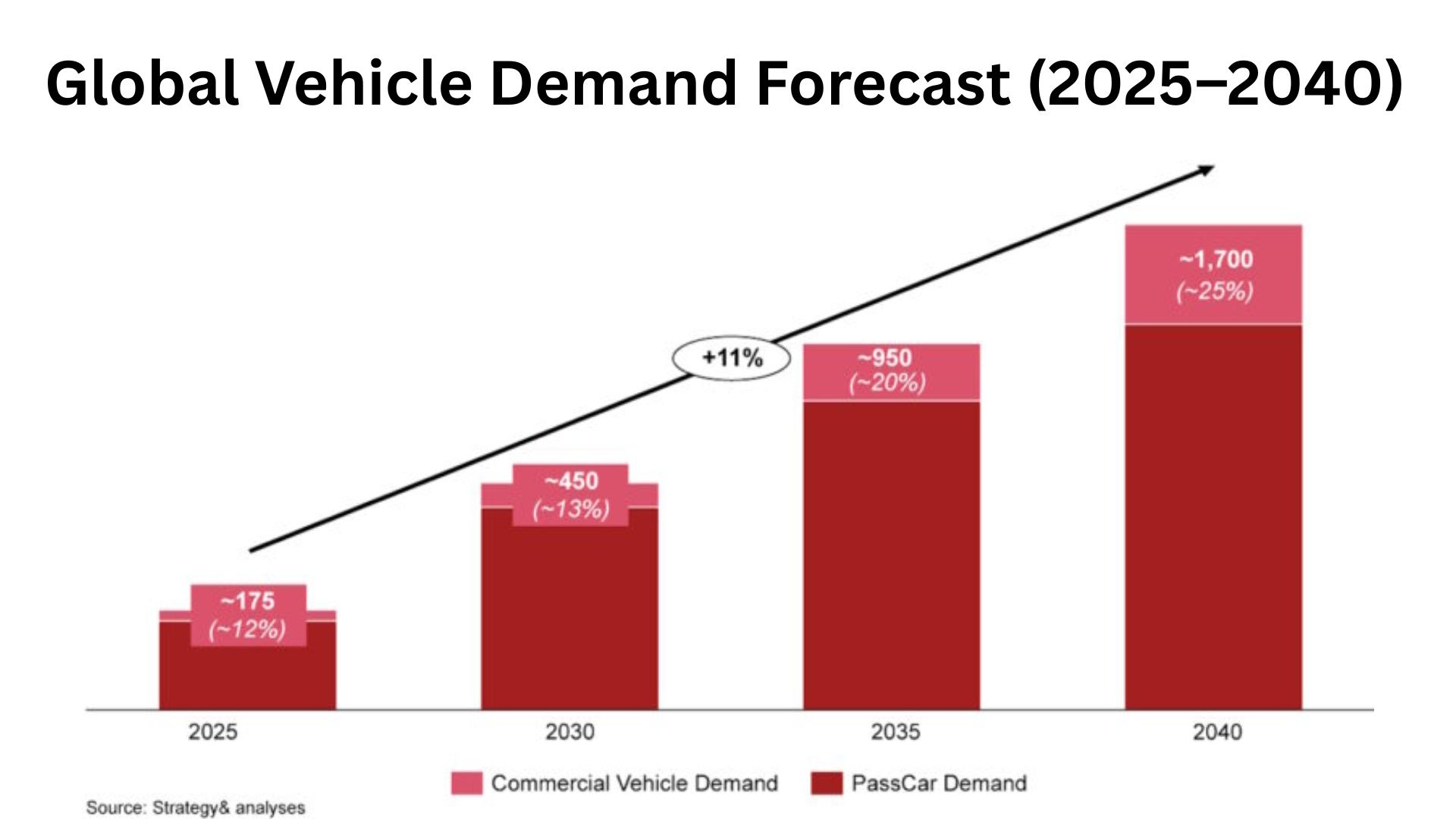
(Source: thedriven.io)
- Strategy& has stated that battery demand in BETs will sharply increase further.
- Global battery demand from these trucks is expected to rise above 400 GWh by 2030 and then shoot to 1,700 GWh by 2040.
- This growth could well focus on lithium iron phosphate (LFP) battery technology, as it gains in importance for powering the growing fleet of electric trucks worldwide.
Electric Trucks In India
- The IPLTech Rhino 5536e is a heavy electric truck with a 258 kWh battery and is capable of delivering 185 km on a single charge. It has a gross combination weight (GCW) of 55,000 kgs and comes with a 12-speed AMT.
- Ashok Leyland’s Boss 14 HB EV is another heavy electric truck with a 201.5 kWh battery and 230 km of range. It boasts a gross vehicle weight (GVW) of 14,050 kgs and supports a payload capacity of 5,000 kgs.
- The Meghaetron EV Truck from Olectra Greentech carries a 150 kWh battery and has a range of 150 km. It bears a GVW of 28,000 kgs and is aimed at the mining sector.
- Tata’s Prima E.28K is a robust electric truck that has a battery capacity of 453 kWh and can go anywhere from 150 to 200 km. It supports a GVW of 28,000 kgs and is used in construction and mining.
- In the medium-duty category, the Ashok Leyland Boss 1219 EV Truck is equipped with a 120 kWh battery and offers a range of 180 km. It has a GVW of 12,190 kg and has a payload-bearing capability of up to 6,000 kg.
- The Tata Ultra T.7 Electric Truck is a mini electric vehicle with a 62.5 kWh battery that gives a mileage between 100 and 120 km. It enables payload capacity in the range of 3,692-4,935 kg and is meant for intercity goods delivery.
- Eicher Pro 2055 Electric Truck gets its power from a 120 kWh battery, promising a range of 150 km. It has a GVW of 7,500 kg and is suitable for urban logistics.
- Another mini electric truck,the Tata Ace EV, with a 21.3 kWh battery, gives a mileage of 154 km. It supports a payload capacity of 600 kg and is used for last-mile delivery operations.
- Omega Seiki OSM M1KA Truck becomes an electric vehicle with a 72 V battery and a range of 75 km. It carries a payload of 1,000 kg and is suitable for urban logistics.
- Other trucks, such as the Tata Ultra E.9 EV, feature a range of 120–150 km on a 110 kWh battery, standing in support of a GVW of 9,000 kg and intended for urban logistics.
- These electric vehicles, by all means, for powerful development, enter the commercial vehicle sector in India, offering options of sustainability and efficiency against a traditional diesel truck.
Electric Trucks Sales By Region
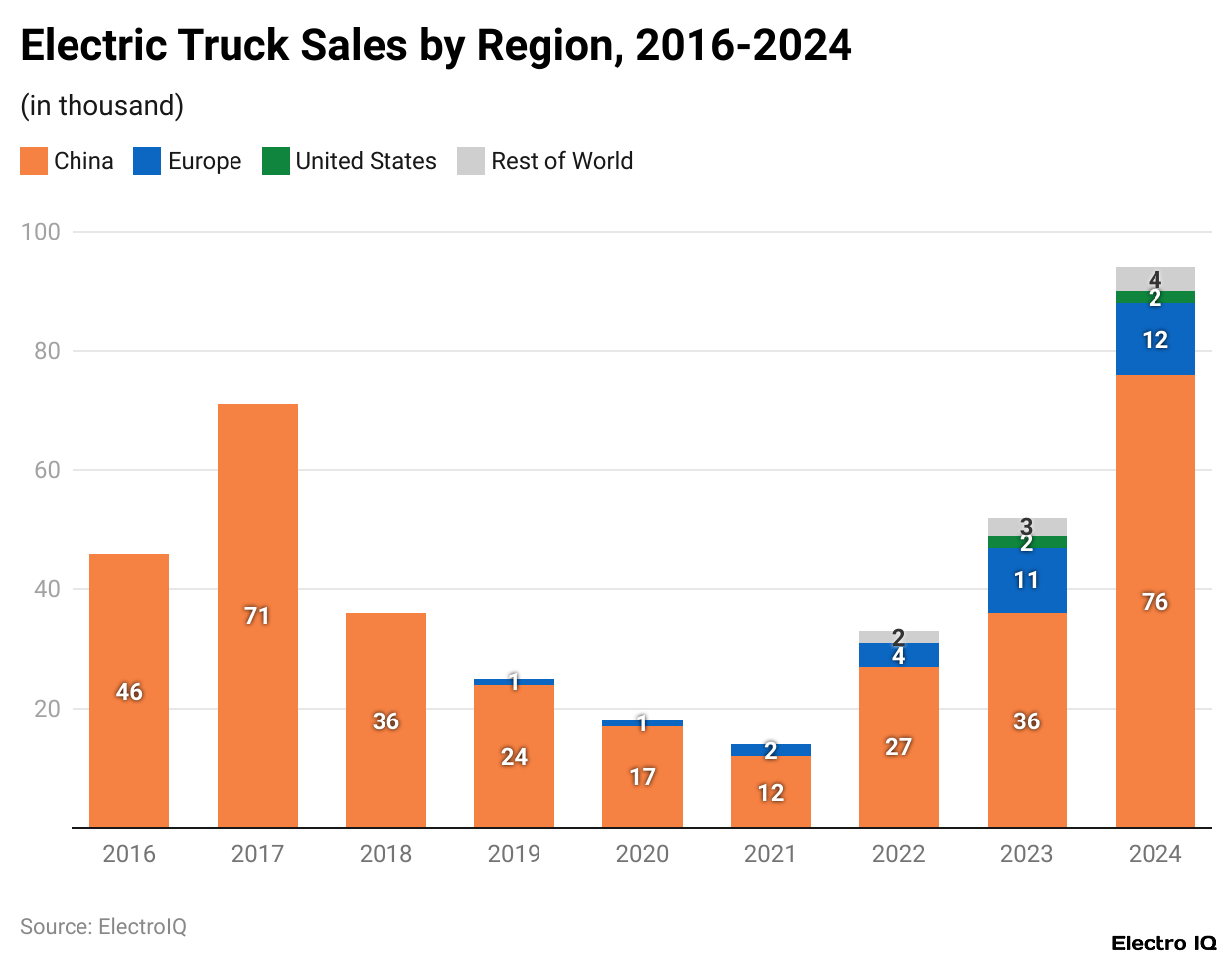
(Reference: iea.org)
- As per the IEA Organization Report, electric truck statistics show that by 2024, sales of medium- and heavy-duty electric trucks still rose for the third consecutive year, exceeding 90,000 units worldwide.
- This equated to a near-80% growth from the year before, an uptick that had never existed from 2018 to 2021.
- The majority of the effort came from China, where sales more than doubled in 2024, accounting for slightly over 80% of electric truck sales worldwide.
- Growth in China, supported by a vehicle scrappage program with purchase incentives renewed until 2025, decreasing battery costs, and truck emission standards introduced in July 2023, was also bolstered by refineries such as Hebei Province, with a fleet of 30,000 electric trucks, where industries are pressured to reduce emissions.
- Unlike most other countries, Europe sold more than 10,000 electric trucks in its second consecutive year, even with hardly any incentives.
- Strong uptakes in Denmark, Germany, Italy, and the UK were discounted by declines felt in some other countries, such as France and the Netherlands.
- Sales in the United States remained steady during 2024, with over 1,700 trucks sold, considering this number was greater than what was sold in the country between 2015 and 2022 combined.
- Sales were aided by tax credits of up to US$40,000 and grants for purchase, charging infrastructure, and related expenses from the nearly US$1 billion Clean Heavy-Duty Vehicles Grant Program.
- Other countries had different sales figures in 2024, with Brazil almost hitting 500 sales, while Canada topped 2,000 for a consecutive second year.
- Japan, South Africa, and Thailand jointly registered an increase from some 130 trucks in 2023 to almost 900 in 2024.
- In India, however, sales fell, even though the government launched the PM E-DRIVE scheme in September with a US$58-million incentive commitment for electric truck purchases over the next two years.
Cost Competitiveness And Efficiency of BEV Trucks And FCE Trucks
- Presently, BEV and FCE trucks retain the status of having the higher upfront prices compared with diesel trucks-because of the costly components of a large battery, a fuel cell system, and hydrogen storage tanks.
- An 800-kWh battery accounted for about 50% of the upfront costs of the truck in 2024, with this expected to be nearly 35% by 2030.
- For FCEVs, the battery, the fuel cell, and hydrogen storage remain roughly half of the purchase price, a share that is unlikely to be reduced by 2030.
- This will all change if economies of scale manage to reduce costs significantly within the next five years: By then, BEV prices would drop between 15% and 35%, with FCEV prices declining between 20% and 25%, depending on region.
- Nonetheless, they would still be more costly than diesel ICE trucks at purchase. Regional cost differences matter greatly: In China, the lowest costs exist, but even there, BEVs and FCEVs cost almost three and four times, respectively, what diesel trucks cost.
- On the other hand, the highest price overall is faced by the US, wherein there is a prix-fort going into US$60,000, which zero-emission trucks fetched above that of Europe in 2024.
- Operating costs tell another story altogether. BEVs NM are about 55% more energy-efficient than diesel trucks; FCEV is about 30% more efficient.
- With respect to 2024 fuel prices, BEV trucks lower direct fuel costs by 70% from diesel in China and by about 33% in the EU, as well as the US. Huge costs lie in charging and hydrogen refuelling infrastructure, however.
- Infrastructure use is crucial: increasing the use of chargers from 5% to 30% lowers the cost per kWh by 80%, in turn, halving the fuel cost per kilometre.
- Similarly, when hydrogen refuelling stations increase their utilisation from 30% to 80%, they cut total fund costs by 25%, though still less costly and easier to scale for HRS than for chargers.
- Total cost of ownership (TCO) varies with the region. Capital costs account for about 20–25% of the TCO for BEVs, whereas they account for 10% of the value of German trucks.
- Energy costs comprise 15–25% of BEV TCO and 15–35% of FCEVs.
- Charging infrastructure constitutes more than 10% of BEV TCO in both the US and Europe, in comparison to 3% in China, because of the cheaper land and equipment.
- Driver regulations are also designed to promote fairness since rest breaks affect how charging periods correspond with actual operations.
- At 350 kW, charging typically takes about 1 hour for 200 km of range. At 1 MW, however, this time could be cut to 20 minutes.
- In Europe and in the US, up to 2,000 and 907 kg are allowed, respectively.
- Though these limits somewhat offset BEV and FCEV weight disadvantages, proposals have been made in Europe to triple or quadruple the current weight allowance.
- Already, in China, the total cost of BEV ownership and operation is observed to be in many cases less than that of diesel, fueled by cheaper batteries and electricity-where energy costs are more than 50% cheaper per kilometre.
- FCEVs, however, remain close to 35% costlier than diesel in China; meanwhile, diesel trucks are about 20% cheaper than BEVs in the US, largely because of higher electricity prices, higher infrastructure development charges, and higher labour costs.
- BEVs in Europe are already nearing parity with diesel, and by 2030, it is expected that both the EU and China will see BEVs more cost-competitive than diesel, with the US expected to reach parity around the same time.
Conclusion
Electric Truck Statistics: After all, electric trucks are on the cusp of going from innovation to inevitability. A regulatory push coupled with the battery costs dropping, efficiency improvements, and regional acceptance, particularly in China, Europe, and the U,isre proof enough that this conversion is well underway.
Barring any unforeseen circumstance, by 2030 battery electric trucks will be knocking at the door of or will exceed diesel on par and in many base markets of cost and performance. With charging speeds, range, and battery technologies marching forward, the electrification of heavy-duty transport is no longer just a theory—it is fast becoming paradoxically imminent, which will cut emissions, drive down operating costs, and rewrite the logistics landscape.
FAQ.
The electric trucking business is currently budding very fast, with sales above 90,000 units in the world in the year 2024, having experienced almost an 80% increase from the previous year. China has exhibited the highest expansion rate, accounting for more than 80% of sales, while both Europe and the US showed another solid adoption rate. Forecasts predict BEV to represent 17% of truck registrations by 2025 and 43% by 2030.
Laws are quite a big helping force. The EU has decreed that truck manufacturers shall cut fleet emissions by 45% by 2030 and 90% by 2040. The US and China are being fast-tracked for an introduction to similar edicts as well. These laws are forcing companies to choose electric over diesel trucks at a faster pace than normal market forces would.
Yes, generally. When it comes to operational cost, electric trucks are cheaper. A BEV is nearly 55% more energy-efficient than a diesel engine, and fuel costs are cheaper by 70% in China and 33% across the EU and US. But, while upfront purchase prices are still higher, lowered battery prices with accompanying incentives are steadily bringing them down.
Innovation in technologies makes electric trucks practical. Range extension is forecast from 600 km to 900 km, while charging speed shall increase by 200%, reaching up to 1,200 kW;a price reduction of another 10% of the drivetrain will also weigh toward making these vehicles feasible for long-distance and industrial implications.
They have reached parity in many applications there (China), owing to cheap batteries and electricity costs. Parity will arrive before 2030 in Europe and close to the same period in the US. Fuel-cell trucks, however, will continue to cost more than diesel and BEVs unless substantial cost-reduction steps are made.

I hold an MBA in Finance and Marketing, bringing a unique blend of business acumen and creative communication skills. With experience as a content in crafting statistical and research-backed content across multiple domains, including education, technology, product reviews, and company website analytics, I specialize in producing engaging, informative, and SEO-optimized content tailored to diverse audiences. My work bridges technical accuracy with compelling storytelling, helping brands educate, inform, and connect with their target markets.










